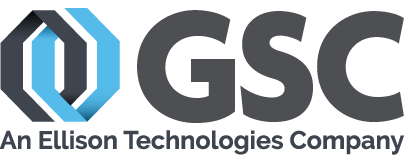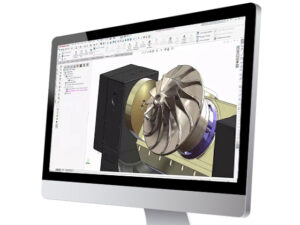Thirty years ago, “3D CAD on Windows” sounded more like a bet than a business plan. In 1995, the very first SOLIDWORKS beta ran on the brand-new Windows 95—and a handful of bold engineers said “yes” to trying it in the real world. One of those people was our own Jeff Setzer, who’s helped unveil every single new version since year one. Three decades, 34 releases, and more than eight million users later, SOLIDWORKS isn’t just a product line—it’s the backbone of modern mechanical design.
As GSC, we’ve had the privilege of growing alongside SOLIDWORKS from the beginning. Here’s a retrospective—through Jeff’s stories and our customers’ wins—on how a scrappy Windows-native CAD changed the industry and kept reinventing itself year after year.
1995: The Windows Bet That Paid Off
In the mid-90s, high-end CAD lived on expensive UNIX workstations. File management felt arcane, and even simple tasks carried needless friction. SOLIDWORKS flipped the script: save, print, and manage files the way the rest of Windows worked—then layer in robust parametric modeling.
Jeff remembers selling SOLIDWORKS 95 as a beta to early adopters who were eager to move faster and spend less on hardware. The hook was simple and audacious: “If you can do it on the desktop you already know, we can put 3D CAD in every engineer’s hands.” That accessibility changed everything—productivity spiked, training curves shortened, and teams started thinking in assemblies, not just drawings.
Early adopters → enduring leaders. Companies that placed the early bet didn’t just model parts more quickly—they built muscle for iterative, cross-functional design. Many of those names are now national brands; some were small shops then and category leaders today.
Customer-Driven, Release After Release
Plenty of software teams “collect feedback.” SOLIDWORKS operationalized it. Jeff’s seen it up close for 30 years: Top 10 Enhancements became a ritual, user group leaders had a real voice, and developers routinely visited shops to watch engineers work. The result? Releases that mapped to reality on the shop floor.
“There are times when I see something and know exactly which customer is going to love it—because they’ve been asking for it for five years.” —Jeff Setzer
This cadence built trust. Customers invested in subscription not just for tech support, but for a steady stream of improvements that reflected their priorities. When renewal time came, our team could point to concrete upgrades, not vague roadmaps.
34 Releases: Reinvention Without Losing the Plot
Innovation only sticks when it stays useful. Across 34 releases, SOLIDWORKS evolved from “Windows-native 3D” into a platform that handles massive assemblies, complex surfacing, simulation-driven decisions, data management, and connected workflows—without burning the bridge to day-to-day practicality.
- From drawings to digital threads. What began as faster part modeling now extends through BOMs, change control, and manufacturing deliverables. Design data isn’t just created; it moves, updates, and informs.
- Performance where it matters. Large assemblies that once pushed boundaries now load, navigate, and rebuild with workflows tuned for real production scale.
- Ecosystem, not a silo. Add-ins, data management, 3D printing, and downstream manufacturing tools matured around core SOLIDWORKS—so teams design with the full lifecycle in view.
Through all of it, the team never drifted from the center of gravity: the working engineer. That’s why the user community stayed vocal, loyal, and—yes—tattoo-level passionate.
Rollouts: More Than a Demo, a Social Contract
Jeff has presented every annual rollout—Lambeau Field, Camp Randall, planetariums, theaters, museums, and now at our GSC offices. The venues change, but the ritual is constant: “Here’s what you asked for. Here’s what’s new. Here’s how to use it to move faster.”
We think of rollouts as a social contract. You bring your challenges and wish list; we bring the software’s latest answers, plus practical guidance from the field. When customers see their feedback reflected in real features—year after year—it reinforces the idea that SOLIDWORKS isn’t just shipped to them; it’s built with them.
Stories From the Front Lines
Thirty years of customer conversations add up to a simple truth: SOLIDWORKS is everywhere—often in places you wouldn’t expect.
- Food processing die for an 8-oz chicken breast. With nothing more than a target mass and a density, Jeff modeled a form that hit the spec precisely—then cut the cavity from a block. A niche ask, a quick solve, and a production-ready outcome.
- Weighing cattle in the field. A customer designed a mobile scale in Unigraphics that certifies weight before transport—because cows lose weight en route. The system’s clever mechanics and enclosures were animated in SOLIDWORKS to demonstrate how it worked. no matter what system your designs originate in, SOLIDWORKS helps you communicate, collaborate, and showcase how your ideas work in the real world.
- Automation machinery for everyday products. Think pen assembly lines, bottle handling, web converting, and packaging systems. From Rube-Goldberg-esque mechanical cams of the 90s to today’s robotics-assisted cells, SOLIDWORKS has been the design cockpit through each generation.
The thread across all of these: speed from idea to iteration. When teams can test concepts digitally, assemble virtually, and communicate downstream without ambiguity, the odds of first-time-right manufacturing go way up.
Community: The Moat You Can’t Fake
User groups, meetups, “Top 10” debates, hallway conversations at World—this community isn’t an afterthought. It’s the force multiplier. Jeff’s been in those rooms for decades. He’s watched leaders push back when the focus drifted and celebrate when it snapped back to core SOLIDWORKS value. That feedback loop is rare in enterprise software—and it’s a huge reason adoption keeps compounding.
You don’t see many CAD communities organizing viral chants at conferences or getting matching tattoos. SOLIDWORKS users actually do.
What This Means for Teams Designing Right Now
If you’re evaluating tools or planning an upgrade path, the last 30 years offer a blueprint for the next 30:
- Pick the platform that listens. Roadmaps should read like your backlog, not a vendor’s wishlist. SOLIDWORKS has the track record.
- Design for the whole lifecycle. From concept to release, BOM to change notice—keep data connected. (Ask us about best-practice PDM setups.)
- Make the rollout a ritual. A yearly checkpoint to level up skills, adopt the right features, and align design with manufacturing.
- Invest in community. User groups and peer networks convert features into real productivity gains.
GSC’s Role: Value-Added, Not Buzzword-Added
“VAR” is just a three-letter word unless it shows up as real outcomes: faster rollouts, cleaner PDM, smarter automation, and fewer surprises on the shop floor. Our team pairs decades of SOLIDWORKS depth (Jeff and his twin John together bring ~60 years of hands-on experience) with modern workflows that shorten time-to-value:
- Implementation & PDM that fit your reality. We align data cards, permissions, and workflows to how your team actually moves.
- Role-based training that sticks. From designers to admins, we tailor sessions so new features become new habits.
- Manufacturing-aware guidance. We bridge design intent with fixturing, tolerances, CAM, and 3D printing—so what you model is what you make.
Celebrate the 30th—And Build What’s Next
Thirty years later, the reasons engineers chose SOLIDWORKS in 1995 still matter: speed, usability, and relentless attention to the user. The difference now is scale—features, performance, and ecosystem depth that make it the industry standard.
If you’ve been part of this journey, thank you. If you’re considering joining—or re-igniting your workflow with the latest release—let’s talk about your goals and map a practical path forward.
Share
Meet the Author

